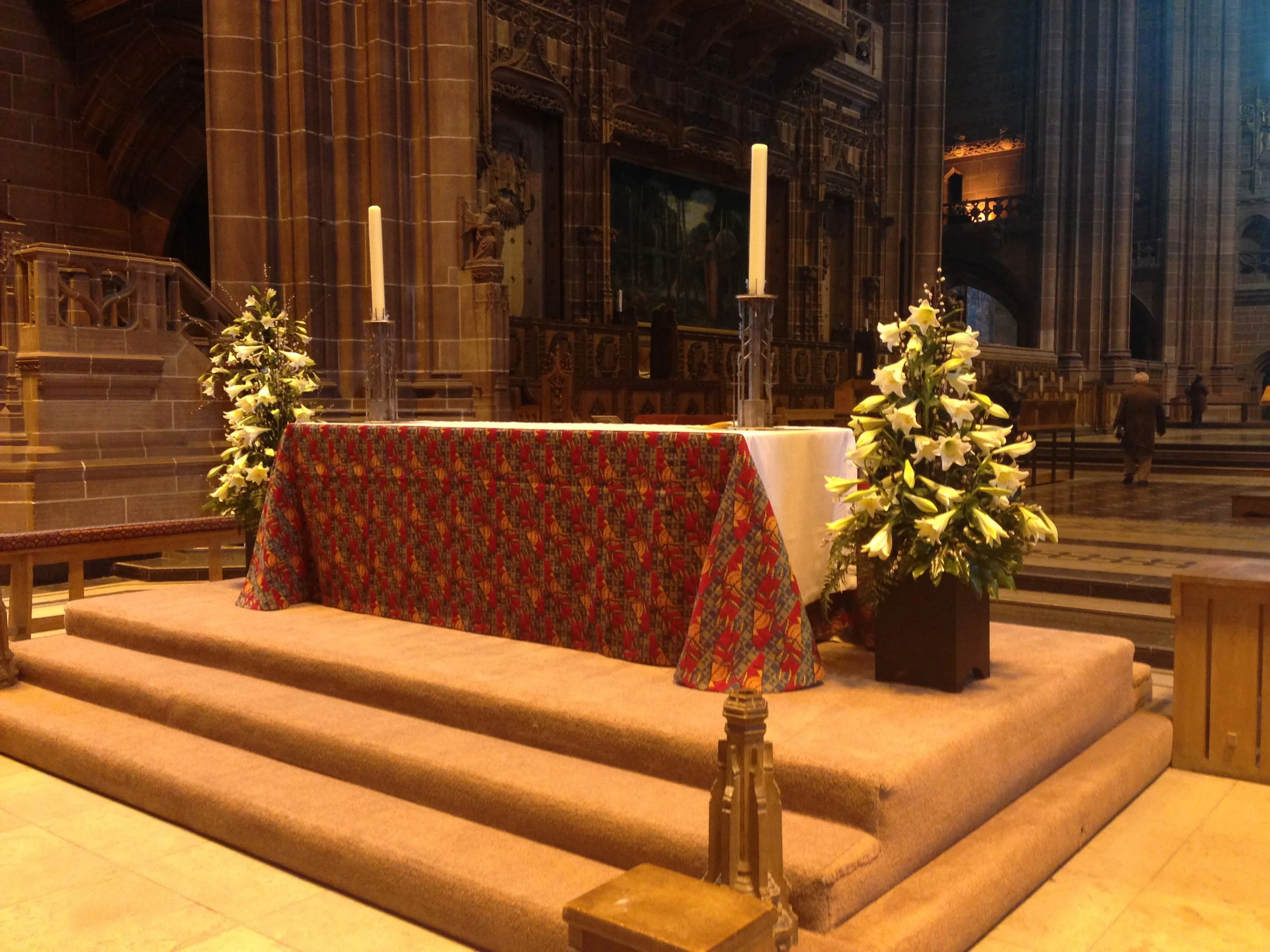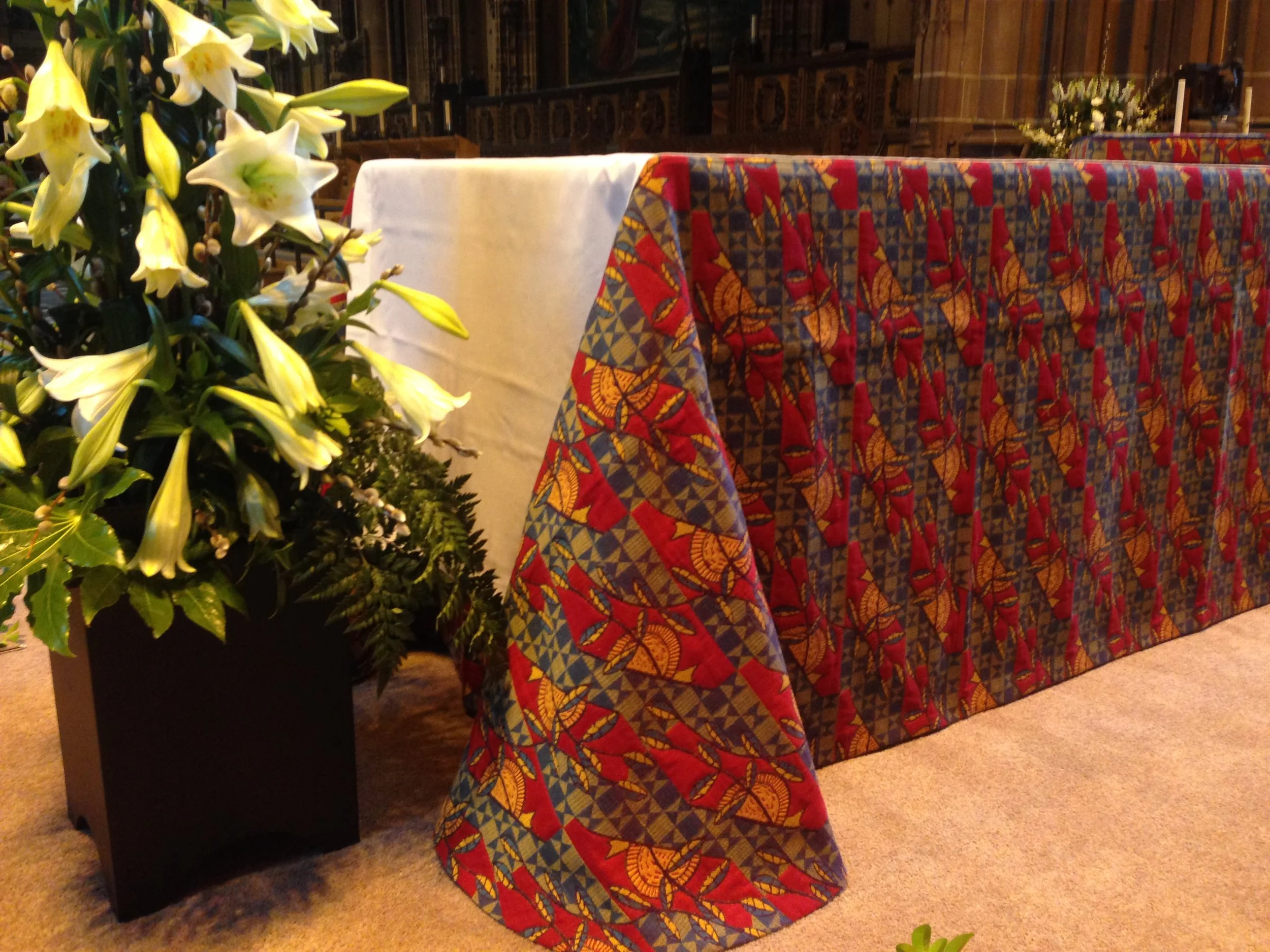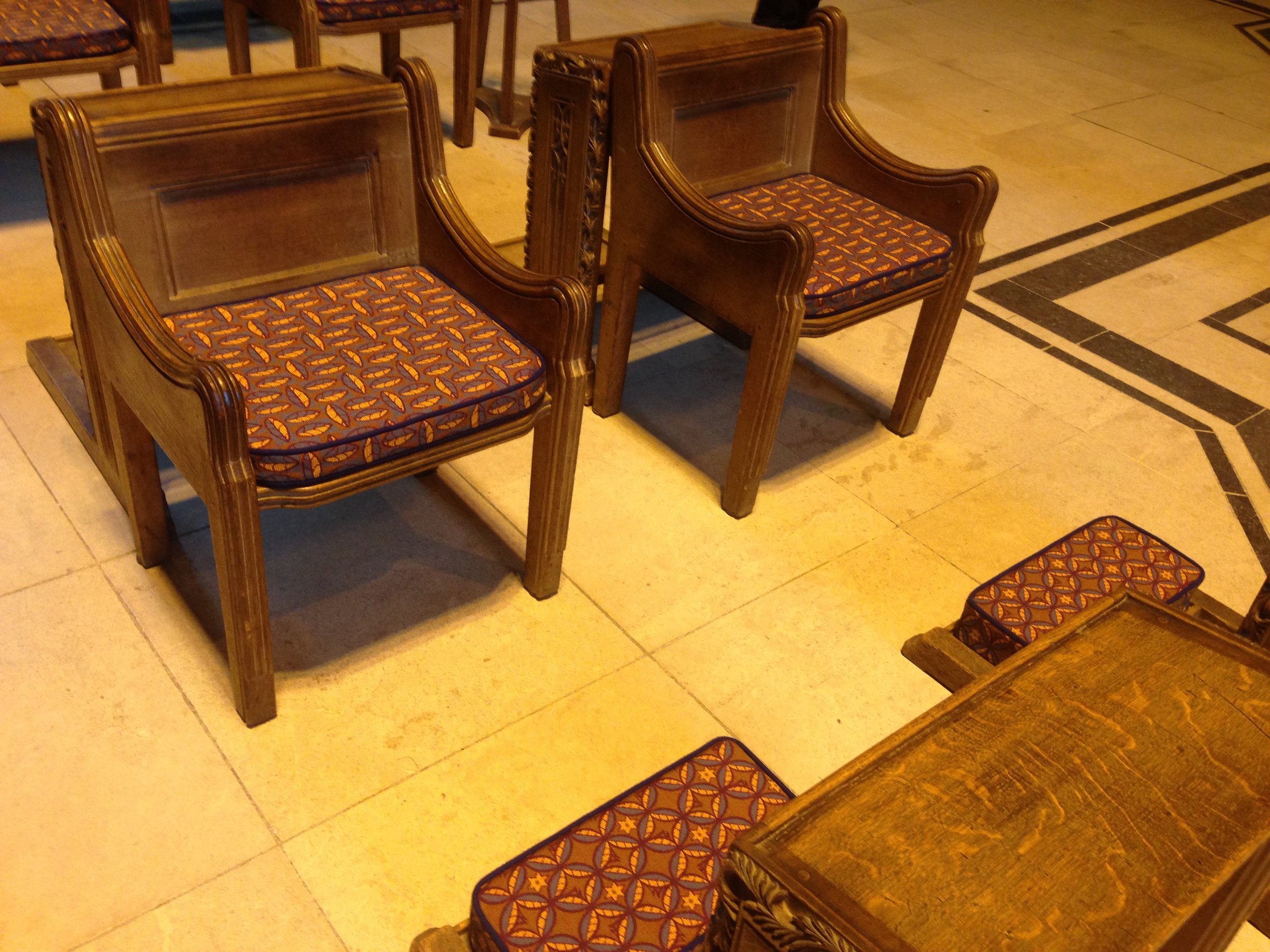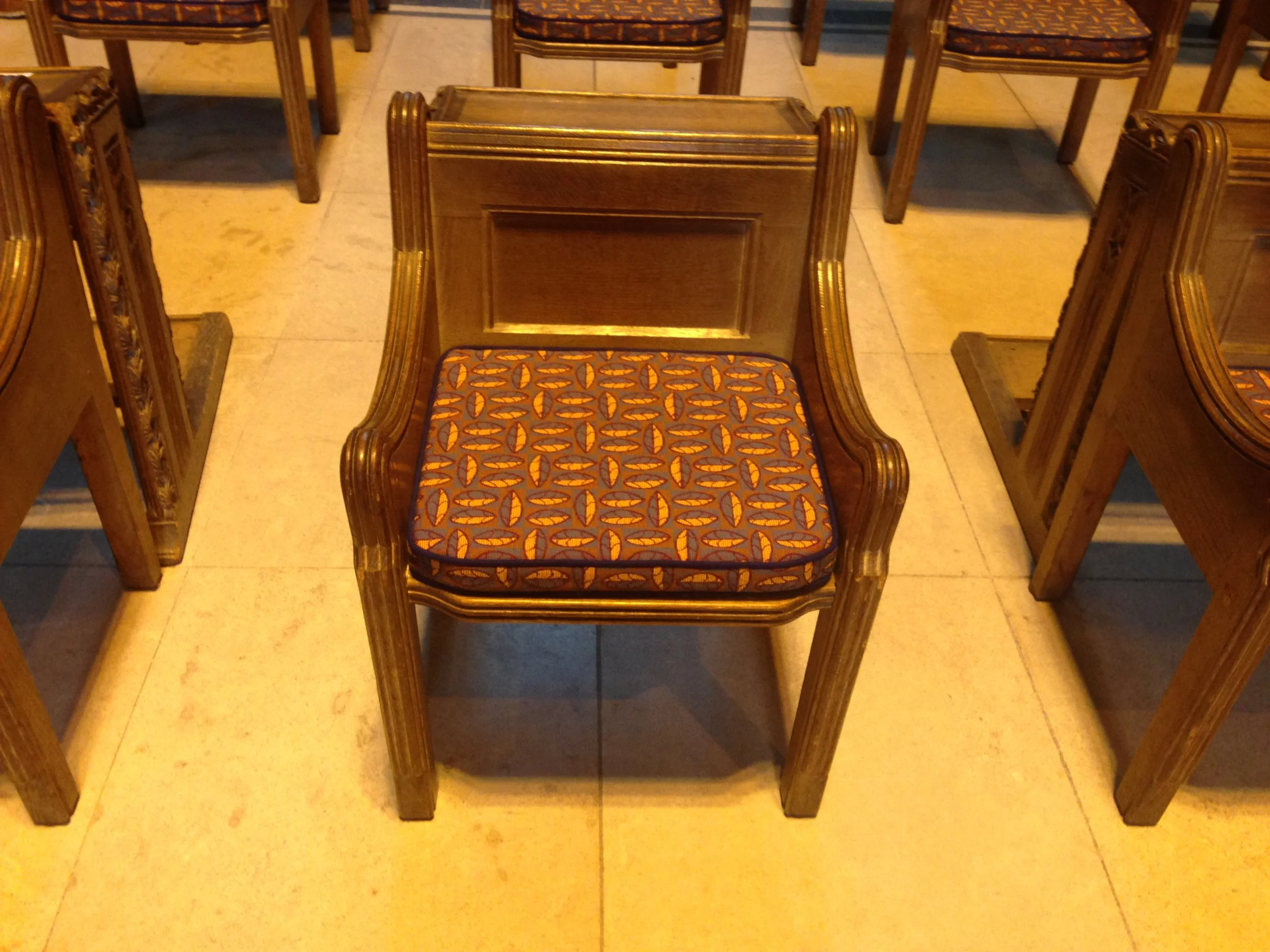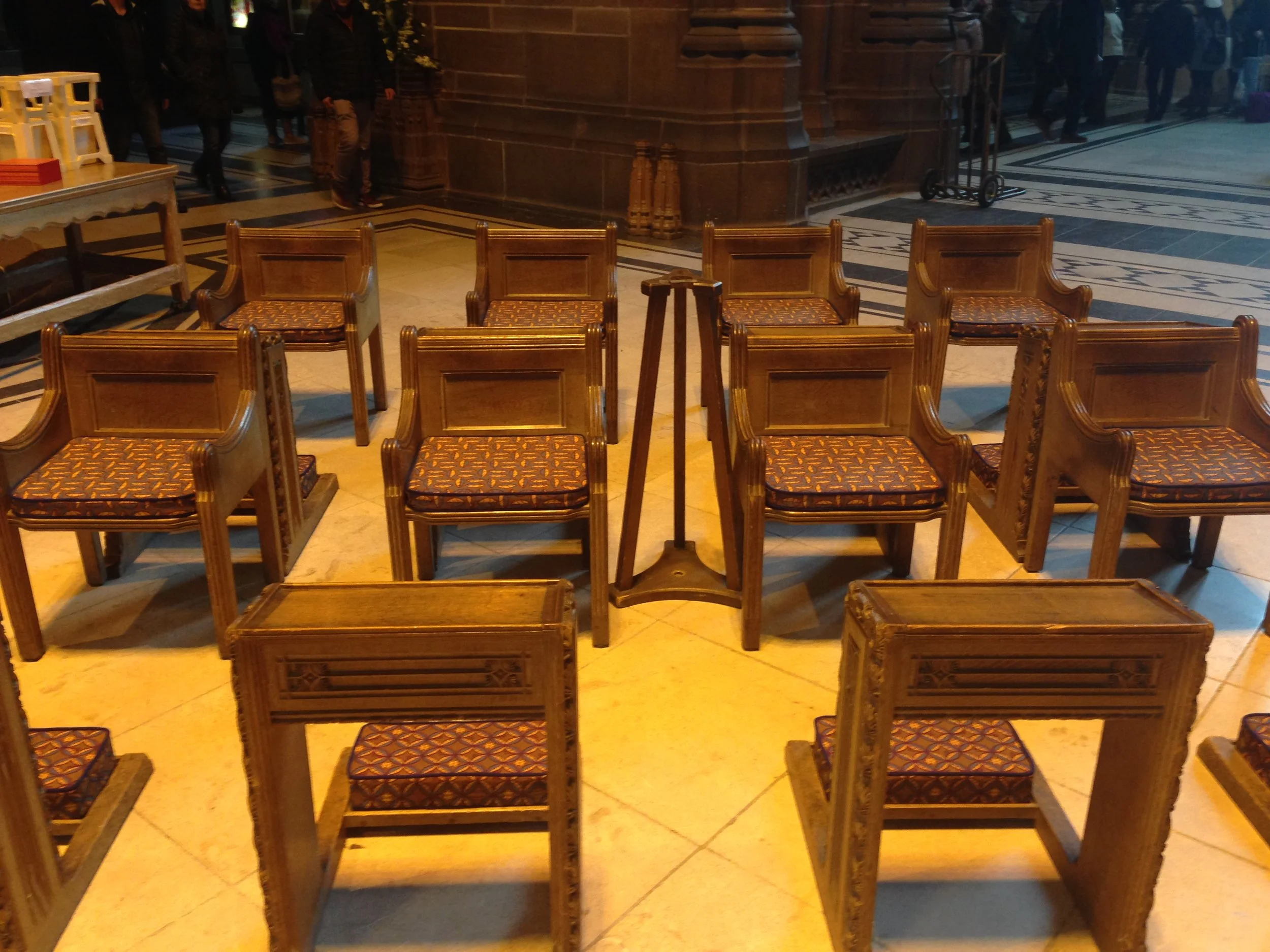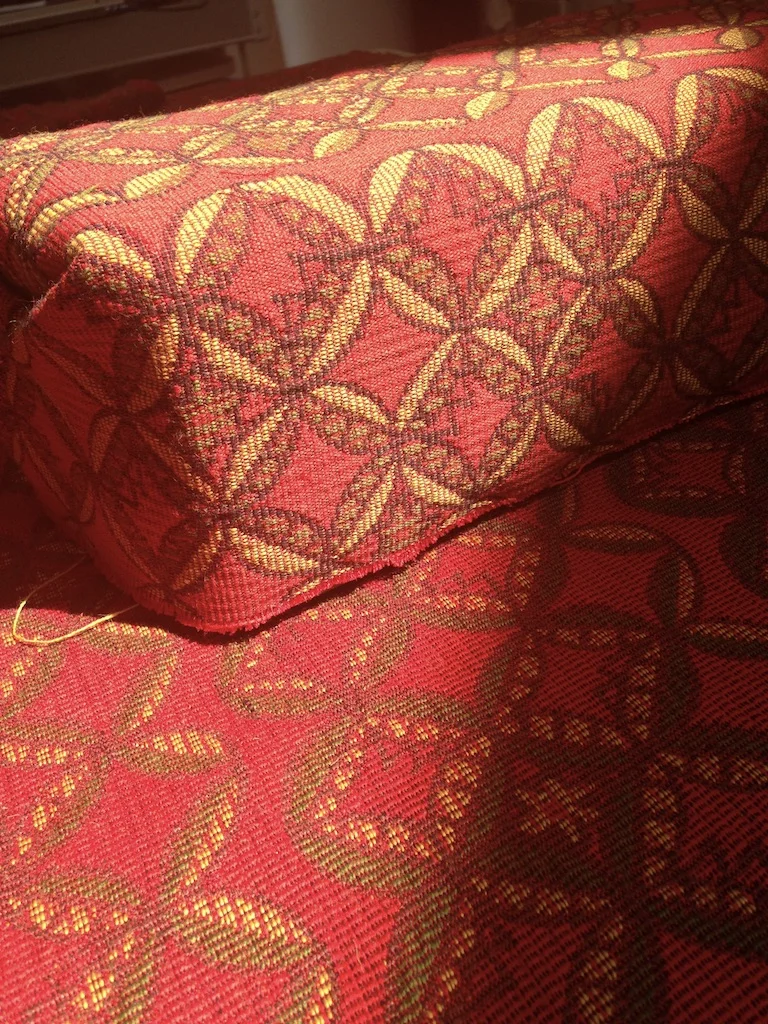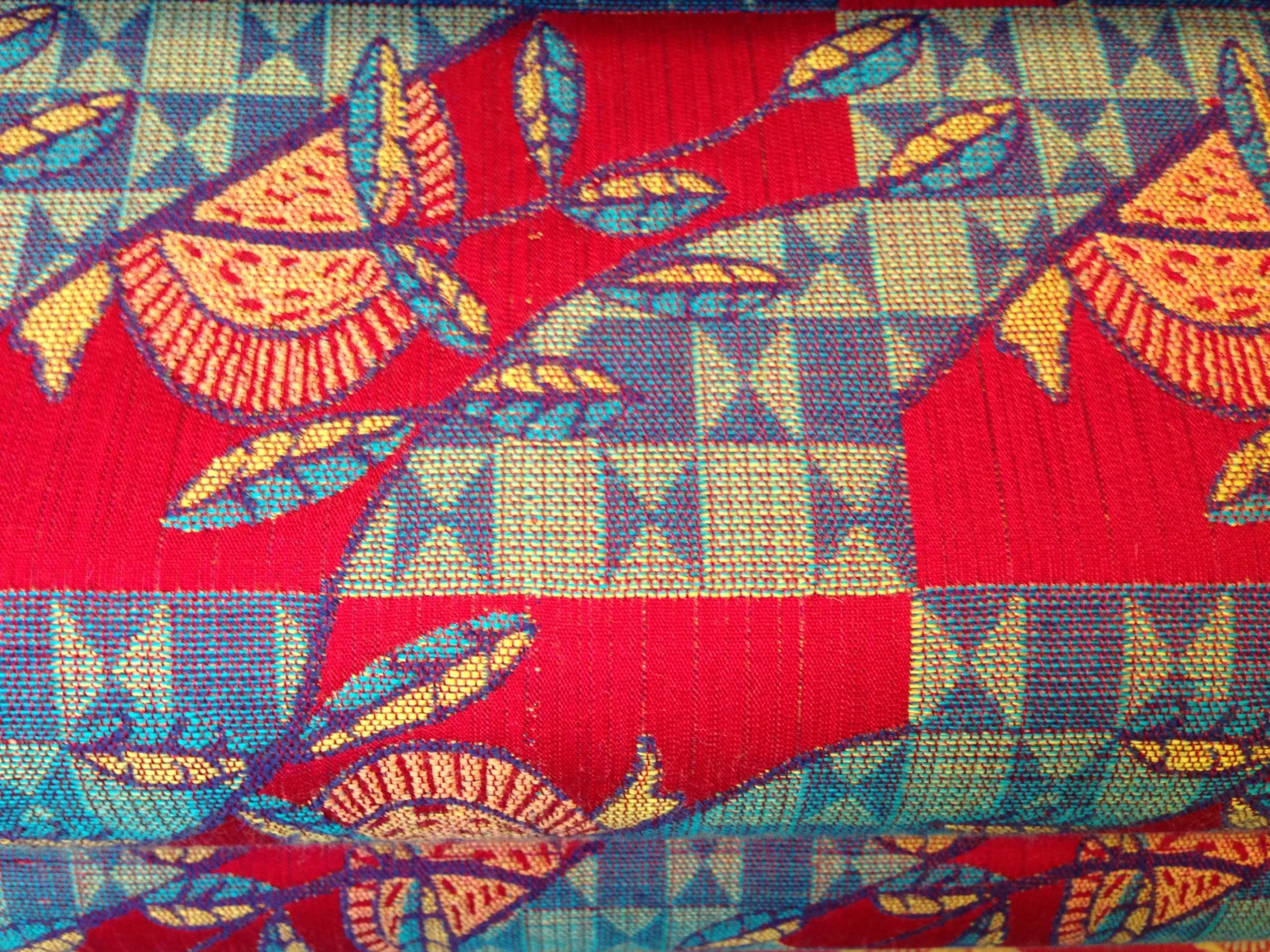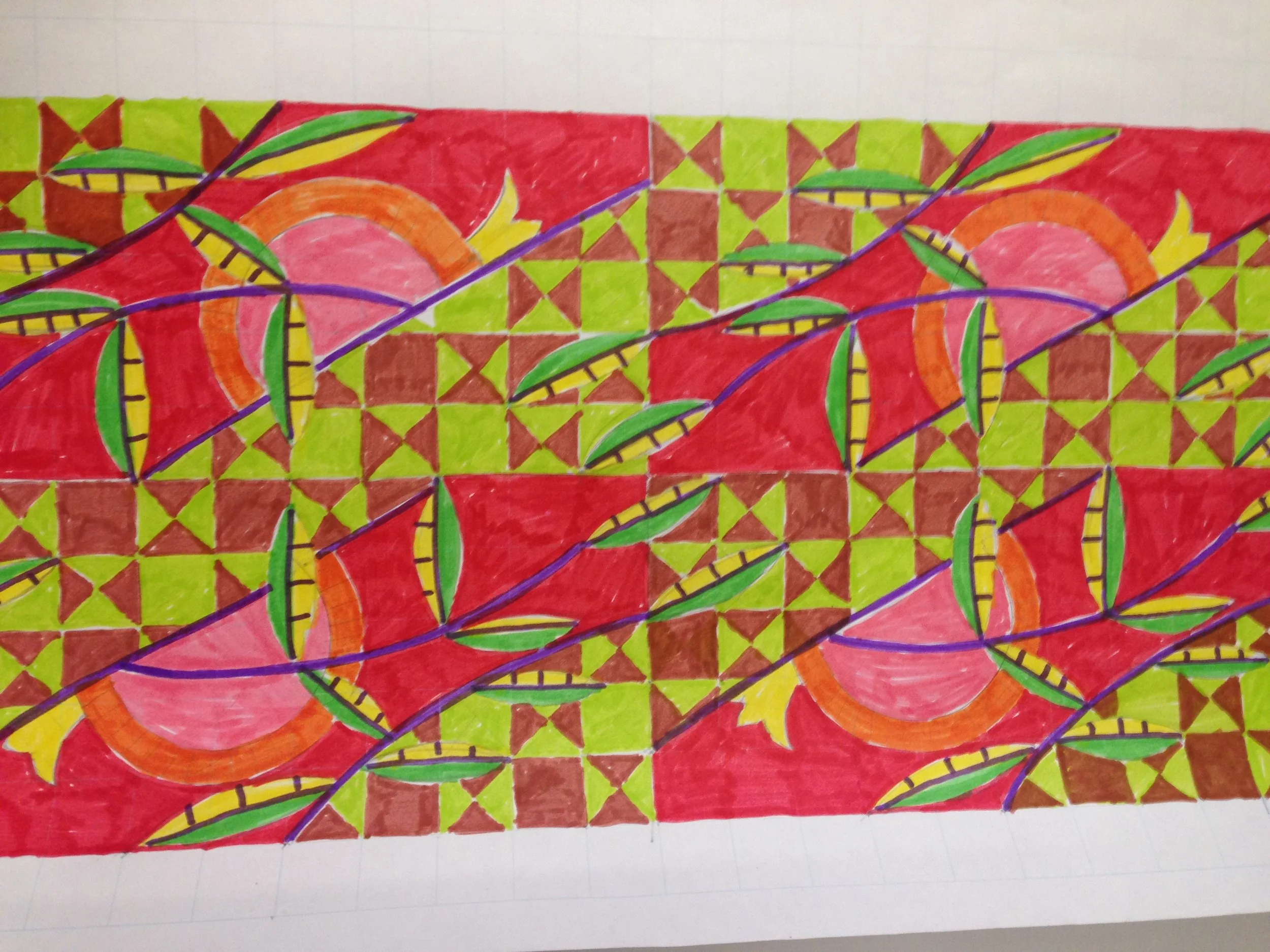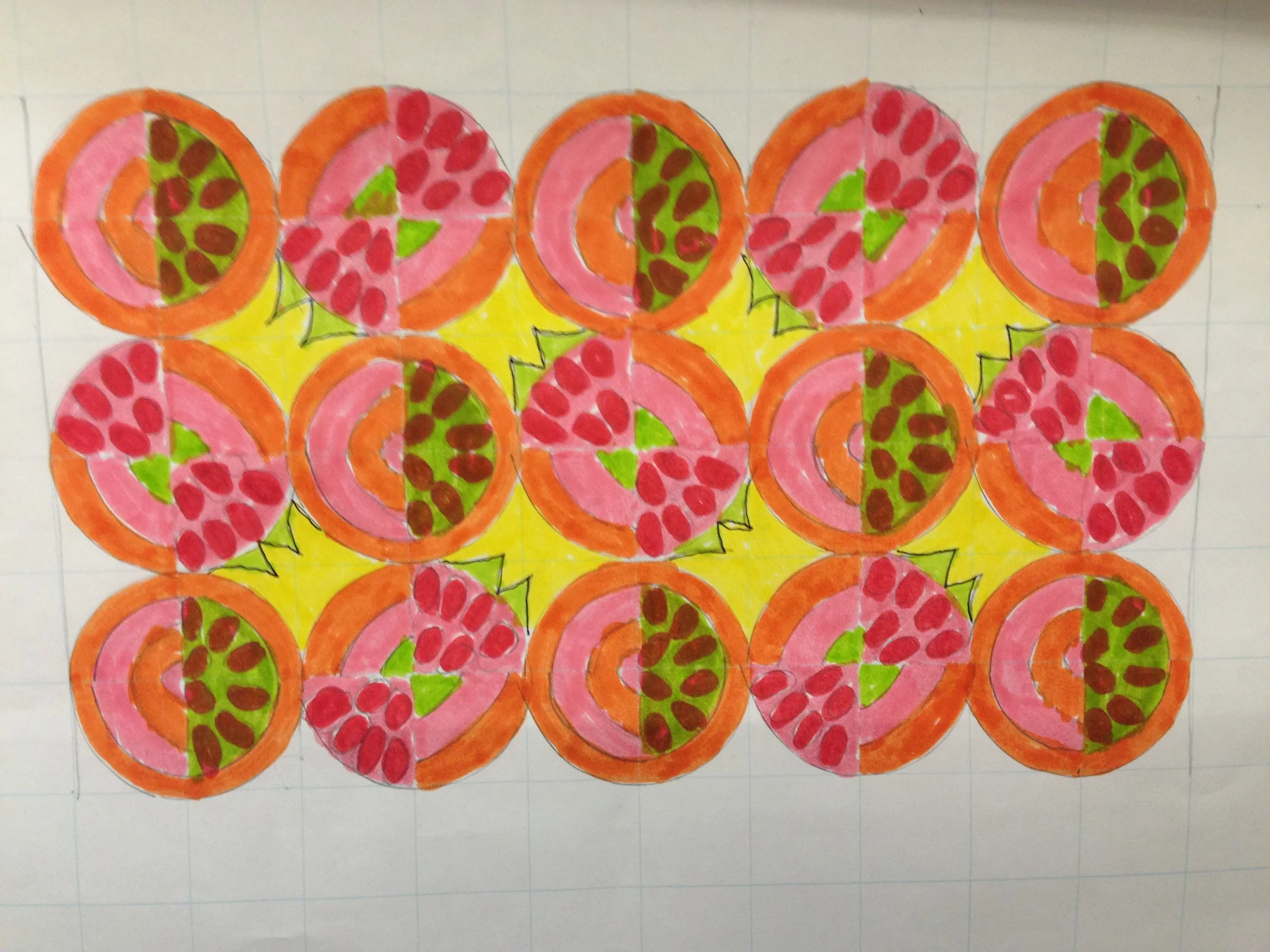LIVERPOOL CATHEDRAL
The pomegranate has been and still is an important fruit in art, religion and culture of many countries, communities and faiths around the world.
Through my visits to hisyorical sites such as Ephesus, Pompeii and Herculaneum the significance of this fruit in painted murals, inlaid marble of the floors, mosaics and everyday objects became obvious. Taking my influences from this, I used the research drawings and photographs gathered on my visits as colour and pattern references for the visual basis of my designs.
The pomegranate features strongly in the 'Mother' cloth and as with all the designs. The first process is to sketch and re sketch the design, working with the repeat pattern looking at the images and shapes to be found within the whole plant. Once an interesting combination of the pomegranate and geometric design has been formulated the weave structures needs to be selected and allocated to the design, cards are then cut and prepared for the Jacquard loom, wool and cotton yarns have been chosen a warp is made and placed on the loom for sampling, this is repeated several times until the balance of colour and design within the fabrics is achieved.
The Altar Cloth
A pure red cotton warp with its strong lustur is woven with bright coloured wool weft achieving a richly defined contrast between naive stylized image of the pomegranate and leaves with its vibrant red ground. The richness and depth of colour and the luster of the cotton connects to the walls of beautiful glass within the Cathedral. This connection is also made in the broken rhythm of the design which echoes the geometric pattern on the Cathedral floor, bringing different elements of the architecture on to the surface of the fabric and into the heart of the building.
The Kneelers
The fabric of the kneelers is woven in a French Tapestry weave giving it the charm of history echoing the needle point craft long associated with church embroidery in its surface texture.
The image of the pomegranate is hidden with its simple pattern. The roundness of shape, the leaves of the tree, the linear form of the coronet and the star shape of its crown are all elements of the fruit to be discovered.
The story of the Pomegranate and it significance to the faith and culture of the church is also carried through on to the design of the upholstery of the surrounding furniture, the choir stalls, cannon stalls and the Bishop Throne, unifying the experience of colour, pattern, texture and the theme.

